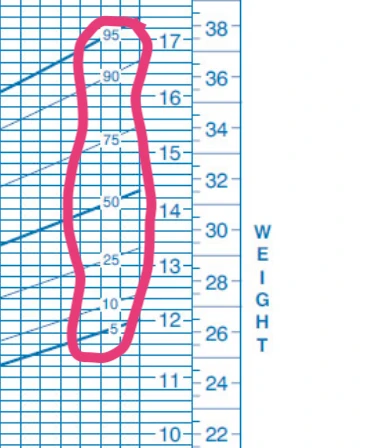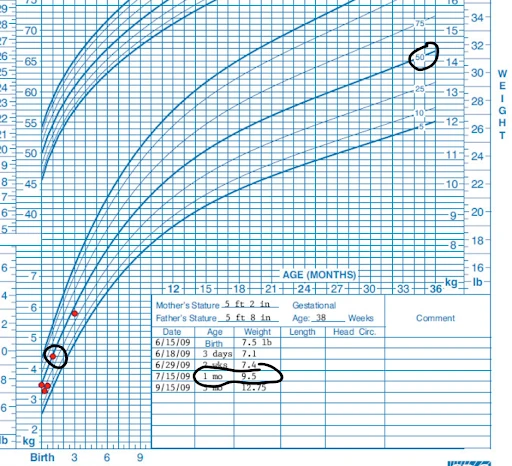So your pediatrician has just presented you with a baby boy growth chart and you’re feeling like that time when you didn’t study for your math final.
Seriously.
What are all those curves and dots and figures?
Luckily, nobody is going to give you a grade for your understanding of a child growth chart—but it’s not a bad idea to get to know what it all means.
It’s a great tool that pediatricians use to check the healthy development of your baby.
Let’s dive in.
In this article: 📝
- Growth Chart for Boys 101
- What do you measure when looking at a baby boy’s growth?
- How do you know what percentile your baby is in?
- What is the average birth weight of a baby boy?
- What is the average height of a baby boy?
Growth Chart for Boys 101
For starters, some terminology that helps:
Baby percentile
A percentile is a way of measuring where a particular measurement fits into a group of similar measurements.
In terms of your growth chart, the percentile measurement allows your doctor to make a comparison between your child’s stats and other children’s stats.
It’s not a matter of this figure is right and that figure is wrong, but rather a way of seeing if your baby is generally healthy.
Also, your doctor is less interested in specific points on the chart and more interested in the:
Growth curve
They’re looking for a pattern of growth to see that your baby’s growing at a consistent rate.
The curve is formed by joining together specific measurements that are taken at your baby’s checkups.
The first measurement will be at birth and the second a few days after that.
After that, measurements will be taken at your child’s regular wellness visits.
What do you measure when looking at a baby boy’s growth?
Here are the major measurements that are included on a baby boy growth chart:
- Baby’s weight
- Their length
- The measurement of the circumference of their head
Other details include:
- The date of measurement
- Your baby’s age
- Your height and father’s height
- Gestational period (basically, how long you were pregnant)
Put that all together and it looks a little something like this example:

Source: CDC
The CDC recommends that your doctor use this WHO boys growth chart until your baby is two years old.
After that, they recommend these CDC boys growth charts.
How do you know what percentile your baby is in?
The percentile is tracked on the graph in numbers ranging from zero to 100.

Source: CDC
To know where your baby fits in terms of percentile, follow the curve from a specific measurement to the percentile number.
For example, the baby below, when measured at one month, was in the 50th percentile:

What is the average birth weight of a baby boy?
The average birth weight for a newborn baby is 7.5 lb—but your baby may be on either side of that and still be very healthy.
Anywhere between 5.5 and 10 lbs is good.
Other interesting points?
Boys are usually heavier than girls, and first babies are usually lighter than their siblings.
Also, newborns often lose weight after birth but regain it over the next two weeks—usually at a rate of about 0.7 oz a day in the first month.
This article has some good info on other growth questions you might have as your baby boy gets older.
What is the average height of a baby boy?
The range is somewhere between 18 and 22 inches at birth.
They usually grow about two inches in the first month.
And then there’s the issue of your baby’s head. At birth, the average head circumference is 13.5 inches and should expand to about 15 inches in the first month.
It’s always okay to ask your doctor for help when it comes to understanding these things.
You’re a team when it comes to your baby’s health.
You don’t need to just miraculously know the answers to everything.
Wishing you all the best, mama.

